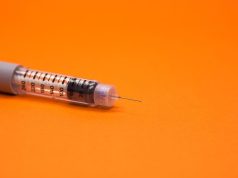Despite trend toward lower stroke risk with high dose
WEDNESDAY, Oct. 28, 2015 (HealthDay News) — Women are more often treated with low-dose dabigatran, although there is a trend toward lower stroke rates with high-dose dabigatran, according to a study published online Oct. 27 in Circulation: Cardiovascular Quality and Outcomes.
Meytal Avgil Tsadok, Ph.D., from McGill University Health Center in Montreal, and colleagues compared sex differences in use, safety, and effectiveness of dabigatran in a population-based cohort study of patients with atrial fibrillation. Men and women who filled a prescription for dabigatran (110 and 150 mg twice/day) were compared with matched warfarin users. Data were included for 31,786 women and 31,324 men.
The researchers found that, compared with men, women had a higher baseline stroke risk and lower baseline bleeding risk. Women also filled more prescriptions for the lower dabigatran dose (adjusted odds ratio, 1.35). In multivariable analyses adjusted for propensity scores, dabigatran use correlated with a lower risk of bleeding compared with warfarin in men (P for interaction = 0.008). In women treated with the 150 mg dose, dabigatran correlated with a trend toward lower risk of stroke (hazard ratio, 0.79; 95 percent confidence interval, 0.56 to 1.04). Dabigatran was not associated with a difference in myocardial infarction risk in either sex.
“The results obtained from this study contribute to the paucity of data available about the clinical impact of sex-related safety difference,” the authors write.
Copyright © 2015 HealthDay. All rights reserved.








